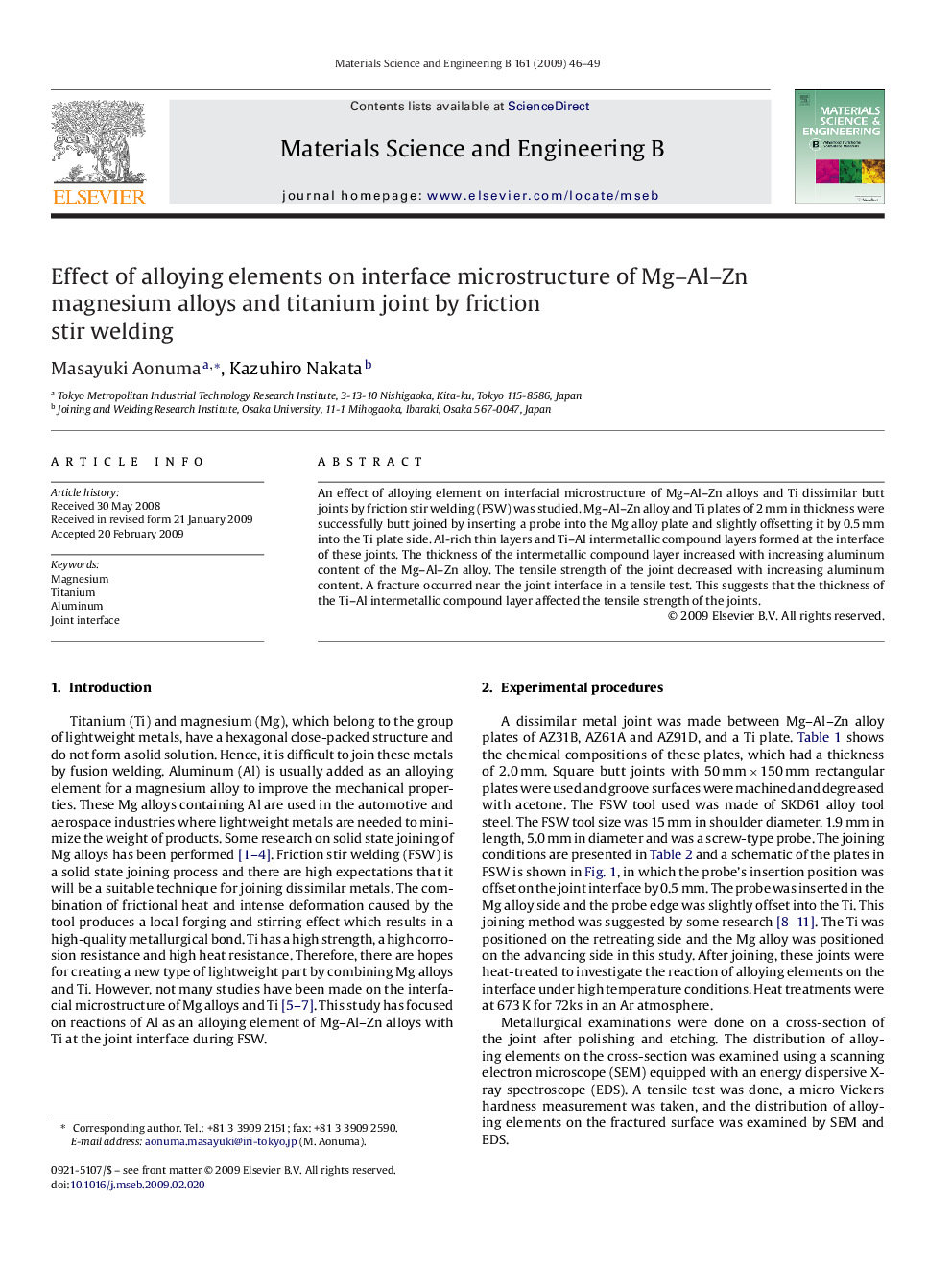| Article ID | Journal | Published Year | Pages | File Type |
|---|---|---|---|---|
| 1530803 | Materials Science and Engineering: B | 2009 | 4 Pages |
An effect of alloying element on interfacial microstructure of Mg–Al–Zn alloys and Ti dissimilar butt joints by friction stir welding (FSW) was studied. Mg–Al–Zn alloy and Ti plates of 2 mm in thickness were successfully butt joined by inserting a probe into the Mg alloy plate and slightly offsetting it by 0.5 mm into the Ti plate side. Al-rich thin layers and Ti–Al intermetallic compound layers formed at the interface of these joints. The thickness of the intermetallic compound layer increased with increasing aluminum content of the Mg–Al–Zn alloy. The tensile strength of the joint decreased with increasing aluminum content. A fracture occurred near the joint interface in a tensile test. This suggests that the thickness of the Ti–Al intermetallic compound layer affected the tensile strength of the joints.
